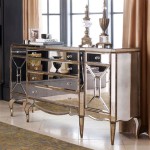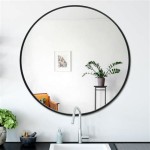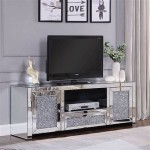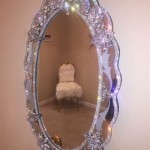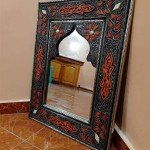Ralph Lauren Mirror Technology: A Revolution in Retail
Ralph Lauren has consistently positioned itself as a leader in the fashion industry, not just for its clothing designs, but also for its innovative approach to customer experience. Integrating technology within the retail environment has become a critical element of modern retail strategies, and Ralph Lauren's embrace of "smart mirror" technology exemplifies this trend. These interactive mirrors offer customers a dynamic and personalized shopping experience, bridging the gap between the physical and digital worlds.
Key Features of Ralph Lauren's Smart Mirrors
Ralph Lauren's smart mirrors boast a range of impressive functionalities designed to enhance and personalize the in-store experience. These features transform the traditional fitting room into an interactive hub, offering customers greater control and convenience.
Interactive Displays and Product Information
Customers can use the mirror's touchscreen interface to access detailed product information, including available sizes, colors, and fabric compositions. This eliminates the need to search for a sales associate for basic queries, empowering customers to explore options at their own pace.
Virtual Try-On Capabilities
One of the most significant advantages of the smart mirror is its virtual try-on feature. Customers can visualize themselves in different outfits without physically changing clothes. This streamlined process saves time and encourages experimentation with various styles and combinations.
Personalized Recommendations
Based on browsing history and previous purchases, the smart mirror can suggest complementary items or alternative styles, providing a personalized shopping experience tailored to individual preferences.
Different Language Options and Adjustable Lighting
Catering to a diverse clientele, the smart mirrors offer multiple language options, ensuring accessibility for international shoppers. Furthermore, customers can adjust the lighting within the fitting room to simulate different environments – from daylight to evening settings – to visualize how an outfit will appear in various situations.
Seamless Integration with Mobile Devices
The smart mirrors facilitate a seamless omnichannel experience by integrating with customers' mobile devices. Shoppers can save favorite items to their online wish lists or share their virtual outfits with friends and family for feedback.
Sales Associate Assistance
While promoting self-service, the smart mirror also allows customers to request assistance from a sales associate directly through the interface. This ensures that personalized support is readily available when needed, combining the benefits of technology with human interaction.
Benefits for Retailers and Customers
The implementation of smart mirror technology provides significant benefits for both retailers and customers. For retailers, these interactive mirrors offer valuable data insights and opportunities to optimize sales strategies.
Enhanced Customer Engagement and Satisfaction
By providing a more engaging and interactive experience, smart mirrors enhance customer satisfaction and foster brand loyalty. The personalized recommendations and ease of use contribute to a positive in-store experience.
Data Collection and Analysis
Smart mirrors collect valuable data on customer preferences, popular items, and buying patterns. This data can be analyzed to optimize inventory management, tailor marketing campaigns, and refine product development strategies.
Increased Sales and Conversion Rates
By simplifying the shopping process and encouraging product discovery, smart mirrors can lead to increased sales and conversion rates. The virtual try-on feature reduces purchase hesitation by allowing customers to visualize outfits before committing to a purchase.
Reduced Operational Costs
While the initial investment in smart mirror technology can be significant, the long-term benefits can include reduced operational costs. By streamlining processes and empowering customers with self-service options, retailers can potentially optimize staffing levels.
The Future of Smart Mirror Technology in Retail
Ralph Lauren's adoption of smart mirrors represents a significant step towards the future of retail. As technology continues to evolve, the potential applications of smart mirrors are vast and promise to further revolutionize the shopping experience.
Integration of Augmented Reality and Artificial Intelligence
Future iterations of smart mirrors could incorporate augmented reality (AR) features, allowing customers to virtually try on accessories and see how outfits would look in different real-world environments. AI-powered styling recommendations could further personalize the shopping experience, suggesting outfits based on body type, personal style, and upcoming events.
Enhanced Personalization and Customization
Smart mirrors could be further personalized to recognize individual customers upon entering the fitting room, automatically displaying their purchase history, saved items, and preferred styling options. This level of personalization would create a truly bespoke shopping experience.
Expansion Beyond Apparel
The application of smart mirror technology extends beyond apparel retail. Similar interactive displays could be implemented in beauty and cosmetics, allowing customers to virtually try on makeup and hairstyles. The potential applications are limited only by imagination and technological advancements.
Ralph Lauren's strategic implementation of smart mirror technology demonstrates the brand’s commitment to innovation and customer-centricity. By embracing this cutting-edge technology, Ralph Lauren is shaping the future of retail and enhancing the customer journey in exciting new ways.

Inside Ralph Lauren S Connected Fitting Rooms Digiday
Ralph Lauren Interactive Mirrors
Ralph Lauren Interactive Mirrors
Ralph Lauren Interactive Mirrors

Ralph Lauren In Tech L Digiday
Ralph Lauren Interactive Mirrors

How Ralph Lauren Stays On Top By Leveraging New Technology
Ralph Lauren Interactive Mirrors

Polo Ralph Lauren Raises Its Tech Game With Interactive Fitting Room Mirrors

How Ralph Lauren Transformed Its Digital Customer Experience Ad Age



